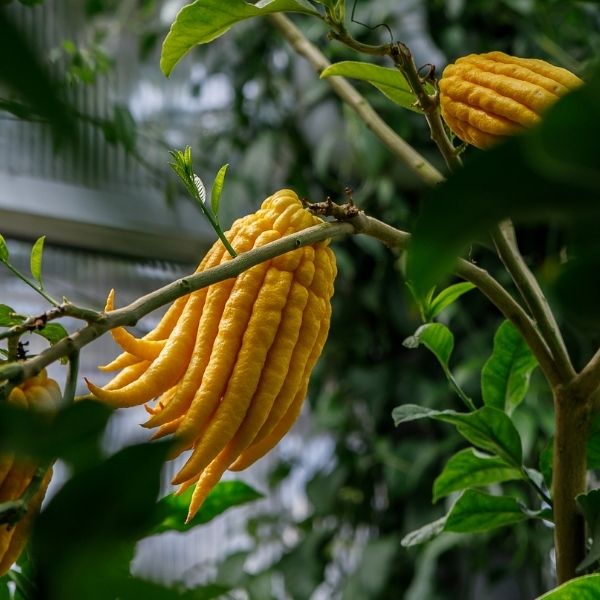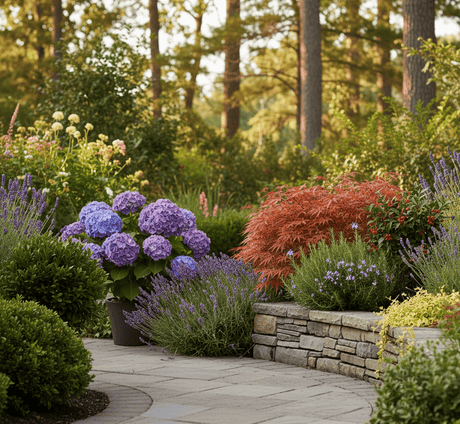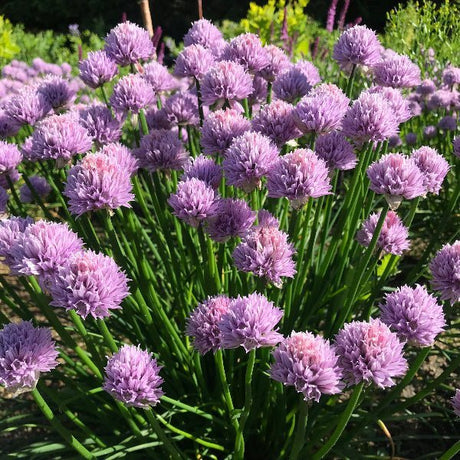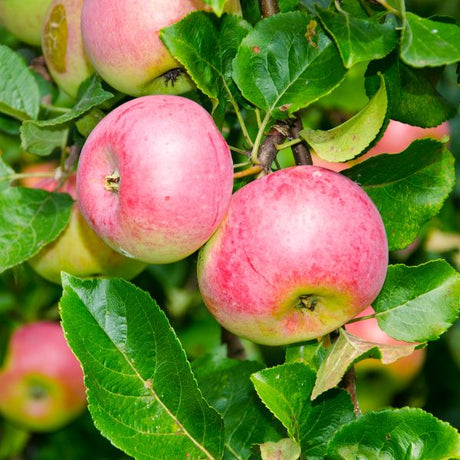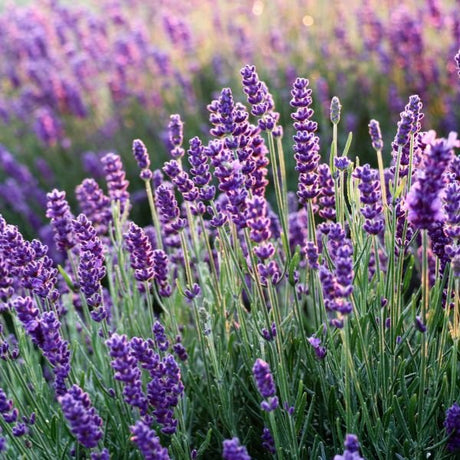Buddha Hand Fruit Tree
Citrus medica var. sarcodactylis
- Stay Protected with Plant Sentry ™
Buddha Hand Fruit Tree - #5 Container 2-3 Feet is backordered and will ship as soon as it is back in stock.
Plant Sentry™
Plant Sentry™

Plant Sentry™ Protected
Your order is protected by our compliance system that:
- Prevents restricted plants from shipping to your state
- Ensures plants meet your state's agricultural requirements
- Protects gardens from invasive pests and diseases
Delivery and Shipping
Delivery and Shipping
Delivery and Shipping
Fast, Safe Plant Delivery
Ships in 3-4 business days • Tracking provided • Weather protected
| Under $50 | $9.99 |
| $50 - $99.99 | $14.99 |
| $100 - $149.99 | $16.99 |
| $150+ | $24.99 |
✓ Zone-specific timing • ✓ Professional packaging • ✓ Health guarantee
Understanding Plant Options
Nature Hills offers plants in two main formats:
- Container Plants: Grown in pots with soil, sized by container volume and plant age
- Bare Root Plants: Dormant plants without soil, sized by height measurements
Container Plant Sizes
Container sizes indicate plant age and growing capacity rather than liquid volume equivalents. Our containers follow industry-standard nursery "trade gallon" specifications, which differ from standard liquid gallon measurements.
Young Plants (6 months to 18 months old)
| Container Size | Actual Volume | Metric Equivalent |
|---|---|---|
| 2" x 2" x 3" | 0.18 - 0.21 dry quarts | 0.20 - 0.23 dry liters |
| 4" Container | 0.31 - 0.87 dry quarts | 0.35 - 0.96 dry liters |
| 4.5" Container | 0.65 dry quarts | 0.72 dry liters |
| 6" Container | 1.4 dry quarts | 1.59 dry liters |
| 1 Quart | 1 dry quart | 1.1 dry liters |
| 5.5" Container | 1.89 dry quarts | 2.08 dry liters |
Established Plants (18 months to 2.5 years old)
| Container Size | Actual Volume | Metric Equivalent |
|---|---|---|
| 2 Quart | 2 dry quarts | 2.2 dry liters |
| #1 Container | 2.26 - 3.73 dry quarts | 2.49 - 4.11 dry liters |
| 5" x 5" x 12" | 3.5 - 4.3 dry quarts | 3.85 - 4.74 dry liters |
Mature Plants (2-4 years old)
| Container Size | Actual Volume | Metric Equivalent |
|---|---|---|
| #2 Container | 1.19 - 1.76 dry gallons | 5.24 - 7.75 dry liters |
| #3 Container | 2.15 - 2.76 dry gallons | 8.14 - 12.16 dry liters |
Large Plants (3-5 years old)
| Container Size | Actual Volume | Metric Equivalent |
|---|---|---|
| #5 Container | 2.92 - 4.62 dry gallons | 12.86 - 20.35 dry liters |
| #6 Container | 5.25 - 6.01 dry gallons | 23.12 - 26.42 dry liters |
| #7 Container | 5.98 - 6.53 dry gallons | 26.34 - 28.76 dry liters |
Bare Root Plants
Bare root plants are sold by height from the root system to the top of the plant. Plants may exceed minimum height requirements.
Common Sizes:
- Trees: 1 foot, 2 feet, 3 feet, 4 feet, 5 feet, 6 feet
- Shrubs & Perennials: 1 foot, 18 inches, 2 feet
Important Notes
Container Volume Specifications
- Trade Gallon Standard: Our containers follow industry-standard "trade gallon" specifications established by the American National Standards Institute (ANSI Z60.1) for nursery stock
- Volume Variations: Actual soil volume may vary due to plant root systems and growing medium settlement
- Age Indicators: Container size primarily indicates plant age and maturity rather than liquid volume equivalents
Growing Conditions
- Plant size can vary based on variety and growing conditions
- Container size helps indicate plant maturity and establishment level
- Larger containers generally mean more established root systems and faster landscape establishment
Seasonal Availability
- Bare root plants are available seasonally when dormant
- Container plants are available throughout the growing season
- Specific varieties may have limited availability in certain sizes
Questions?
For questions about specific plant sizes or availability, please contact our plant experts who can help you choose the right size for your landscape needs.
Plant Highlights
Buddha Hand Fruit Tree highlights at a glance!
-
Botanical Name
-
Brand
-
Growth RateModerate
-
Mature Height
-
Mature Width
-
Leaf Color
-
Flower Color
-
Pollinator FriendlyYes
-
Pollinator Required
-
Bloom PeriodEarly Summer, Late Summer
-
FragrantYes
Characteristics
Where To Plant
When To Prune
- Late Spring
Water & Moisture Needs
- Moderate
Sunlight Needs
Soil Needs
- Well Drained
Growing Zones
Buddha Hand Fruit is a Different Take on Citrus
- One of the First Cultivated Citrus in the World
- Sure-Fire Conversation Starter
- Amazingly Strong Citrus Scent
- Great in Containers
- Delightfully Sporadic White Flowers
- Typically Ripens November-January
- Bring Inside for Winter Months
- Use as Zest or Cocktail Garnishes
Growing a Buddha's Hand Fruit (Citrus medica var. sarcodactylis) gives you a conversation starter as well as a bona fide piece of history. Talk about unique!
Ancient records show that this is one of the oldest varieties of citrus fruit ever recorded. And not being your typical round Citrus, when the fruit is mature it looks like a human hand with fingers reaching out.
First cultivated in China and Northern India, these fruits are also known as Fingered Citron. They are sometimes described as "lemons with fingers". This odd little Citrus is treasured for its sweet floral fragrance and mild zest.
Inside the fruit there is little to no flesh or even any real juice to speak of - it's all pith and rind. Because there's nothing like regular Citrus fruit inside, it isn't really an 'eating' fruit, although you can candy the rind and use the zest in baking and drink infusions.
What the fruit is often used for is table or floral displays and scenting your home. Just slice one of the 'fingers' off and it will perfume your whole room with a mouth-watering citrusy scent.
These mid-season citrus typically ripen up between November and January and deliver plenty of the wonderfully weird fruit.
NatureHills.com ships strong, young trees with great branching and hardy roots to get you off to a great start. Order yours today!
How to Use Buddha Hand Fruit in the Landscape
Hardy in zones 10 and 11, most of us will be enjoying Buddha's Hand as a patio tree to be moved inside during the winter months. This means you can use it as an outdoor decoration in the summer months and an indoor delight during the winter!
Periodically, you'll find divinely fragrant white flowers budding atop the lush green broadleaf evergreen foliage as many Citrus varieties do.
The fruit resembles a lemon with finger-like segments and, when placed prominently, is sure to kick off plenty of conversations with your guests and neighbors.
Sure, there aren't many recipes that call for the fleshy part of the fruit due to its mostly rindy nature but that doesn't mean there's no use for it in the kitchen!
Snag a Buddha hand citron and zest it into salad dressing or your favorite savory dishes - it tastes like lemon zest. You can also elevate cocktail night with a lemony garnish.
If you have any leftovers after all that, try your hand at candying your fruity hand. The pith (or the white part inside the rind) isn't bitter and therefore doesn't require the timely steps of soaking and pre-boiling.
#ProPlantTips for Care
This symbol of happiness longevity and good fortune is self-pollinating, so no need for a second partner to reap the benefits of these fun fruits.
To keep Buddah's Hand happy, plant in well-drained soils in full sun. If you don't live in zones 10 or 11, we suggest planting in a pot with good drainage and placing it in your sunniest window for best results.
Like other Citrus, Buddha's Hand HATES soggy soil so the well-drained part of this care plan is key.
Protecting Container Citrus From Cold
Although it's famous for growing in warmer regions, it can also thrive in colder areas as long as the tree is brought indoors prior to the first frost of winter.
If you're growing these tropical trees in the ground in the lowest of their favored growing zones, they need to be planted in a sheltered spot to avoid the worst of the chill. If a spot like that is unavailable, then you are better off planting in a large, deep container.
In borderline growing zones, begin slowly acclimating your tree indoors or into a protected location, eventually moving your tree inside in bright indirect sun for the winter if the temperatures in your area ever dip below that 40°F range. In spring, reverse this process and begin acclimating your tree to again be back out in the full sun all summer. This reduces stress and leaf drop.
While flowering can be pretty sporadic, the fruit typically ripens between November and January. When indoors, try to add a bit of humidity to its spot, it'll appreciate it endlessly.
- Full Sun
- Very Well-Drained Soil
- Moderate to Low Moisture
- Appreciates Acidic Soil & Regular Fertility
- Prune After Harvest
Lemons and limes are great but why not take a ride on the wild side with Buddha Hand Fruit Tree? Order one today from our expert growers at NatureHills.com!

